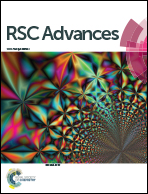Interfacial effect of Stropharia rugoso-annulata in liquid medium: interaction of exudates and nickel-quintozene
Abstract
This work investigated the accumulation of nickel (Ni) and dissipation of quintozene (PCNB) by the mycelia of Stropharia rugoo-annulata (S. rugoo-annulata), together with the correlation between cell exudates and contaminants removal in liquid medium. Results showed that the removal rates of PCNB accounted for 20.75–55.26% and 42.39–90.92% of the initial concentration (125 mg kg−1) in un-inoculated and inoculated media, respectively. Ni accumulation in mycelia of S. rugoo-annulata at the end of experiment was 81.09 mg kg−1 when the initial concentration of Ni was 30 mg L−1 in polluted media, among which the proportion of NaCl-extractable (56.34%) was dominant. These results showed that PCNB and Ni were remarkably removed by mycelia incubation. The concentrations of cell exudates (macromolecular substances, low-weight-molecular organic acids (LMWOAs), liglinolytic enzymes) were quite different in both polluted and natural media inoculated with S. rugoo-annulata, indicating that the production of exudates was closely related to PCNB and Ni. Besides, the results of scanning electron microscopy (SEM) and diffuse reflectance infrared Fourier-transform spectroscopy (DRIFTS) demonstrated that the pollutants influenced the surface phenotypic structure but not for basic cell structures, implying mycelia of S. rugoo-annulata could well tolerate the pollutants. Our results suggested the presence of S. rugoo-annulata was effective in promoting the bioremediation of Ni–PCNB and laid the foundation for a better understanding of the mechanism about contaminant removal by mushroom.


 Please wait while we load your content...
Please wait while we load your content...